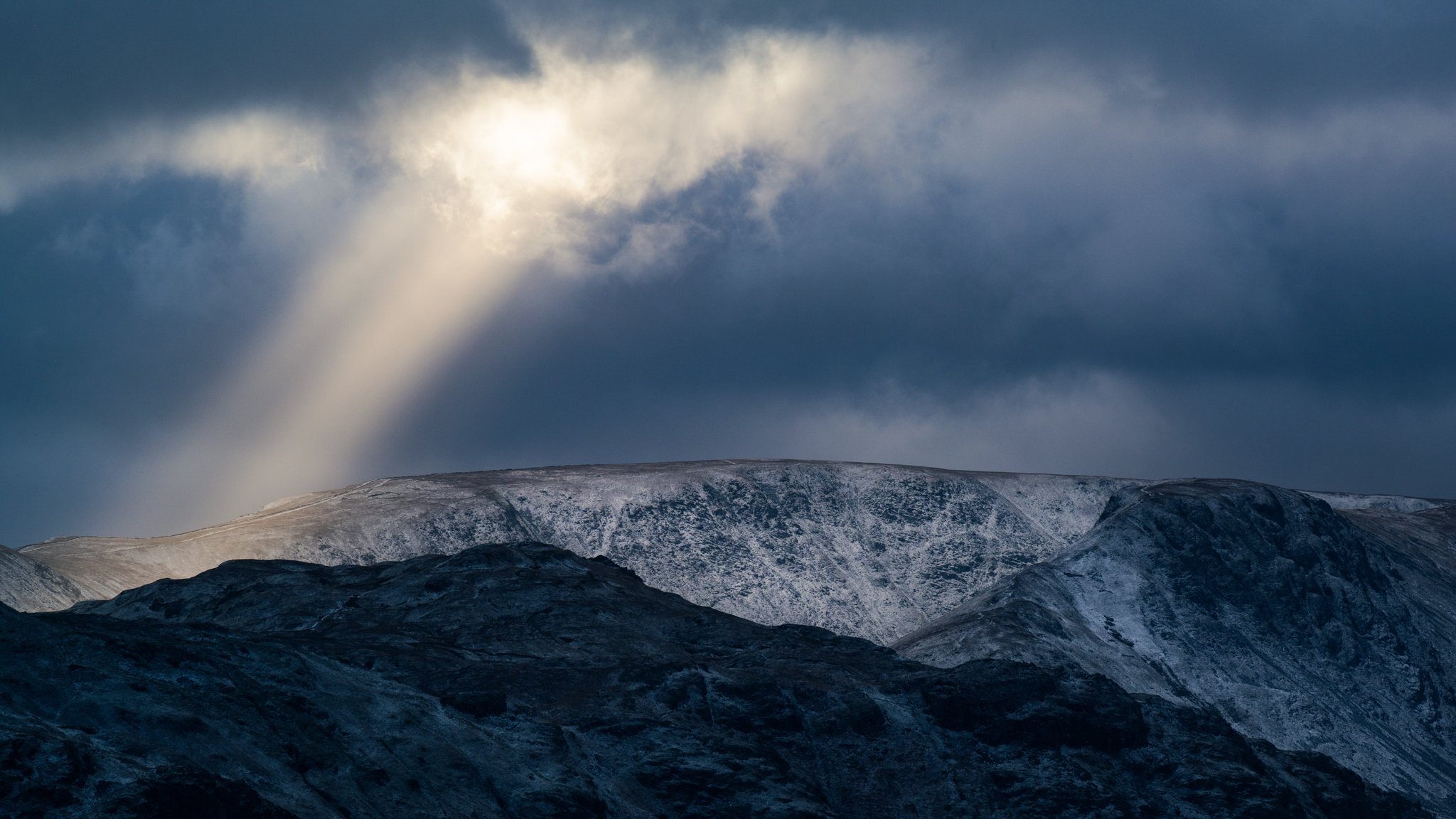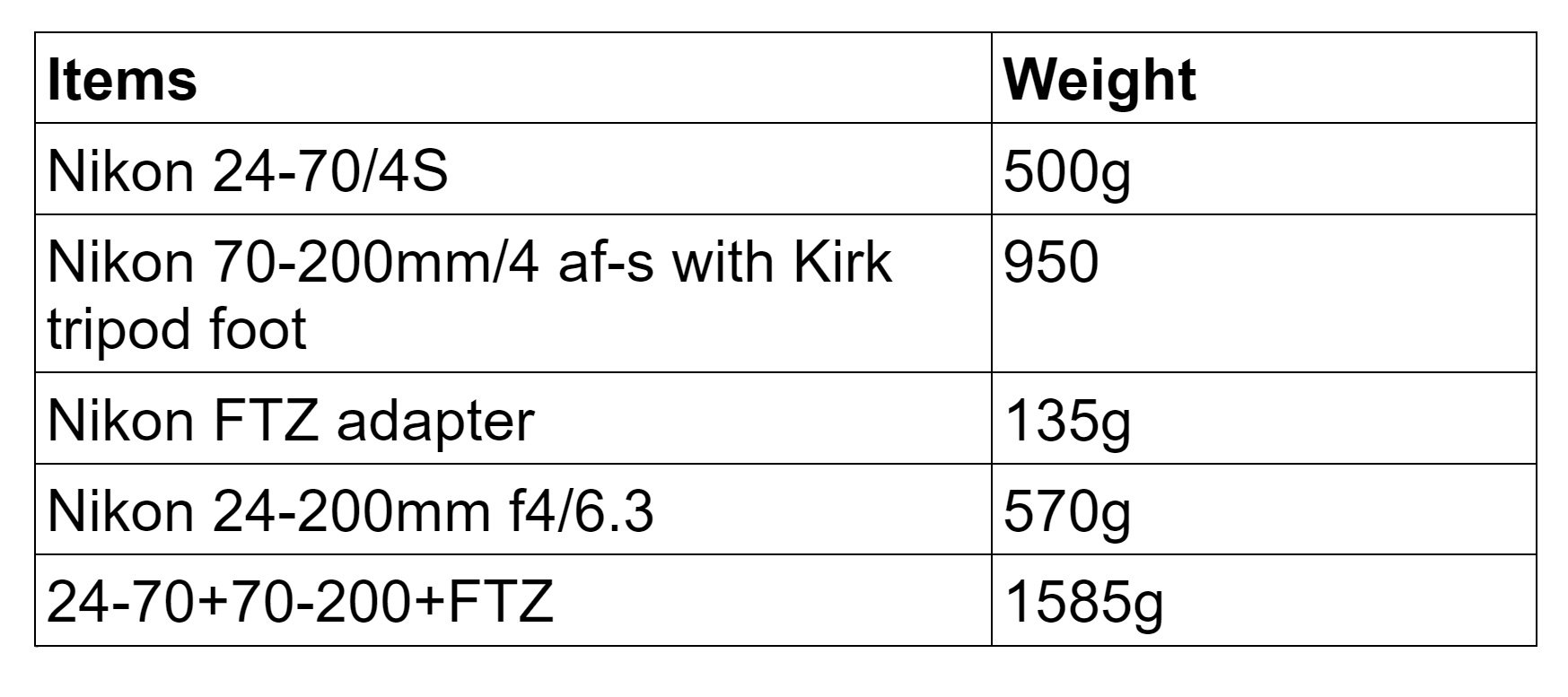Nikon 24-200mm Review
94mm @ f8
This review has been difficult to write, I feel as though I've been swimming against the tide throughout. I've had to force 'head over heart' and analysis over instinct. I've had to forget decades of experience and accept the new.
The short version is that it's good, very good. The longer version has a just one or two caveats.
I was late to the party with this lens, I don't like super zooms, I don't use super zooms and most certainly don't buy super zooms.
This visitor, invited or not, kept banging on my door until I capitulated and agreed to consider it. Pending references of course. As I looked around for suitable references I began to realise that I was a tad late to the show. Thom Hogan and Photography Life ( The only major written review sites to which I give credence) had both been complimentary and a few high quality landscapers I knew were using and speaking very positively about the lens. Have a look at the fine work from Stuart McGlennon and Mark Littlejohn for starters.
32mm @f11
Having used the lens extensively for the past 4 months, I've decided to approach the review a little differently and shortcut to a set of images and conclusions. If you'd like detailed side by side comparisons under more or less lab conditions then have a look at Ricco Chera and his Ricco Talks stuff. He compares this lens with all the obvious candidates. He is of course not independent but so far I've not found fault with his work.
I set out with a number of questions about this lens:
How might it perform as a 'only carry one lens' solution?
Does it replace my 24-70/4?
How does it compare to my 70-200/4 over the same range?
Would I miss the apertures between f4 and f6.3?
How clear cut are the weight saving benefits?
24mm @f13
First and foremost bear in mind that I was considering this lens for landscape photography. Most images are made somewhere between f8 and f16. If I'm looking for shallow depth of field, I've probably already packed another lens specifically with that in mind.
Secondly as the years take their toll physically, I'm increasingly concerned with weight reduction of equipment.
97mm @f11
Conclusions
A number of things happen during such a test, consciously and subconsciously. Perhaps the key outcome is that over time I've chosen to pack this lens more and more often.
As a 'one lens solution' it flies, it really does. It's light, compact and covers the vast majority of the focal lengths that I use regularly.
As a replacement for my 24-70/4, it gets very close, very. It's not quite as sharp between 24mm and about 30mm. Mostly not noticeable. It doesn't have the same choice of apertures. It's not quite as robust but it is lighter. I think I'd describe the 24-70 as outstanding and the 24-200 as very good to excellent.
170mm @f8
The comparison with the 70-200/4 was fascinating. A full on professional lens, modest aperture but a build and optical performance on a par with the pro 2.8 versions. Mine had been an ever present lens since the day it was released. Compact and superb class leading performance. The outcome of the evaluation process is that I've just sold my 70-200/4. Over the 70-200mm range I couldn't separate them. From that point I was then looking at the same optical output in a smaller, lighter native lens. A bonus was therefore one less lens needing an FTZ. One can miss a little of the heft in windy conditions and certainly the depth of the hood in rain but they were prices I was prepared to pay.
175mm @f8
I’ve not missed having f4. There are many times that I choose to use wider apertures in landscape photography but in those instances I’m much more likely to be looking at wider apertures than f2.8. In terms of the look of out of focus backgrounds, they seem just fine to me, not distracting and not too busy.
155mm at f8
When we look at the weight savings, things start to really jump off the page.
So if we carry the 24-200 instead of the 70-200 we save about 500g and if we carry just the 24-200mm alone we save an entire kg. There are downsides here of course. This is a consumer lens, it’s not built to the same standards as the S lenses. It’s not going to be as robust, it may not perform quite as well in extremes of temperature, it may not survive an impact quite as well. In the long term, it may well not last as well. EDIT: Just heard from a pal who has taken this lens on a 9 day sled trip through Artic Sweden with no issues. That's freezing temperatures and lots of bumping around covered. However most of us are in a position where we can keep our lenses in padded bags and look after them pretty well and the benefits in terms of weight and space are overwhelming. I still can’t quite believe I’ve finally sold my 70-200mm/4 but it does fit into a pattern that has been set by the Z cameras and lenses. Standards are being re-written with every new launch and we can increasingly just pick up a camera and lens and just get on with making photographs without worrying about sharpness. I haven’t bothered to specifically make images wide open, I’ve just used the lens normally. Like most lenses, it peaks round about the middle of the aperture range and is a bit sharper in the centre than at the edges.
A great lens and highly recommended.
42mm @f11
64mm @f8
190mm @f8
59mm @f8
96mm @f11
97 @f13
33mm @f13















